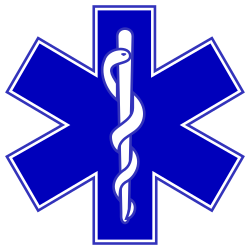Anencephaly side
Anencephaly is a fatal neural tube defect in which the cerebral hemispheres do not develop. Typically some brainstem tissue is present, but it is anatomically highly disorganized. Prenatal screening for neural tube defects has significantly decreased the number of births of infants with anencephaly, and correction of folate deficiency (now known to be an etiologic factor) is expected to reduce the incidence even further. It has been recommended that all women of childbearing age take folate supplements to reduce the risk of this devastating anomaly.
With no upper brain development, there is no development of the calvarium. The result is that the eyes and eyelids are the topmost part of the body, giving the head a "frog-eyed" appearance. The side view, shown above, brings to mind some of the depictions of people and gods in Pre-Columbian Mesoamerican art. One could idly speculate that these early artists were inspired by sporadic anencephalic births among their people.Relevantní obrázky
Relevantní články
AnencefalieAnencefalie je absence hlavní části mozku, lebky a pokožky hlavy, ke kterému dochází během embryonálního vývoje. Je to porucha, která vyplývá z defektu neurální trubice, který nastane, když se rostrální konec (hlava) neurální trubice neuzavře, většinou mezi 23. a 26. dnem po početí. Dětem narozeným s touto poruchou obvykle chybí telencephala, největší část mozku, skládající se hlavně z mozkových hemisfér, včetně neokortexu, který je zodpovědný za poznání. Zbývající struktura je obvykle pokryta pouze tenkou membránou – kůže, kosti, mozkové pleny, atd. všechny chybí. Až na několik málo výjimek děti s touto poruchou nepřežily déle než pár hodin, případně dnů po narození. .. pokračovat ve čtení


